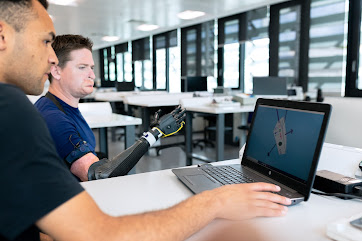How AI is Changing the Way We Work and Collaborate
Artificial intelligence (AI) is transforming the way we work and collaborate. From virtual assistants and chatbots to predictive analytics and automation, AI is changing the way we do business. In this post, we'll explore how AI is changing the workplace and discuss the benefits and challenges of this transformation.
Virtual Assistants
Virtual assistants, like Siri and Alexa, are becoming increasingly common in the workplace. They can help us with tasks like scheduling meetings, sending emails, and setting reminders, freeing up time for us to focus on more important tasks. They can also help us stay organized, making sure that we never miss an important deadline or meeting.
One of the biggest benefits of virtual assistants is that they are always available. Whether we're in the office or on the go, we can use our virtual assistants to stay connected and get work done. This is especially important for businesses that have employees who work remotely or who are located in different time zones.
Chatbots
Another way that AI is changing the way we collaborate is through the use of chatbots. Chatbots are software programs that can simulate human conversation, allowing us to interact with them in a more natural way. They can be used for a variety of tasks, including customer service, marketing, and even HR.
One of the benefits of chatbots is that they can be used to automate repetitive tasks, such as answering customer inquiries. This can free up employees to focus on more complex tasks, improving productivity and efficiency. Chatbots can also help to improve customer service, providing 24/7 support and ensuring that customers always receive a prompt response.
While AI-powered chatbots offer numerous benefits in customer service roles, such as providing 24/7 support and improving response times, they also come with some potential issues. One of the main concerns is that chatbots may not be able to handle complex customer inquiries, leading to frustration and dissatisfaction among customers. Additionally, chatbots may not be able to understand customer emotions and provide the same level of empathy as a human representative. To address these challenges, businesses need to carefully consider the role of chatbots in their customer service strategy and ensure that they are properly trained and integrated into their overall customer experience.
Predictive Analytics
AI is also being used to improve decision-making through predictive analytics. Predictive analytics involves using data, statistical algorithms, and machine learning techniques to identify the likelihood of future outcomes based on historical data.
In the workplace, predictive analytics can be used to identify trends and patterns in data, helping businesses make more informed decisions. For example, businesses can use predictive analytics to identify which products are likely to sell best, helping them to make better decisions about inventory and pricing.
While predictive analysis has many benefits, it also comes with some potential issues that businesses need to consider. One of the main challenges with predictive analysis is the accuracy of the predictions. Predictive models are only as good as the data they are based on, and if the data is incomplete, inaccurate, or biased, the predictions may be unreliable or even misleading.
Another challenge is the potential for the misuse of predictive analysis. Predictive analysis can be used to make decisions about everything from credit scores to hiring and promotions, but if the models are biased or based on incomplete data, they can lead to discrimination and other unethical practices.
Finally, there is the issue of transparency. Predictive models are often complex and difficult to understand, which can make it challenging for businesses to explain their decision-making processes to customers, regulators, and other stakeholders. As such, it is important for businesses to be transparent about the data and algorithms they use in their predictive analysis and to ensure that they are using them ethically and responsibly.
Conclusion
AI is transforming the way we work and collaborate, providing us with new tools and technologies to help us be more productive and efficient. From virtual assistants and chatbots to predictive analytics and automation, AI is changing the workplace in profound ways. As businesses continue to adopt AI technologies, it will be important to address the challenges that come with this transformation, including the need for new skills and the potential impact on employment. Nevertheless, AI holds great promise for the future of work, and its potential benefits are too great to ignore.
My name is Spec and I own a small media company called OnTheSpectrum Media. I'm autistic and I create content along with a few others who are also neurodivergent. If you would like to see some of our human-generated content feel free to have a look at the links below.



Spec, can't seem to connect with you in our usual place. R u doing ok?
ReplyDelete